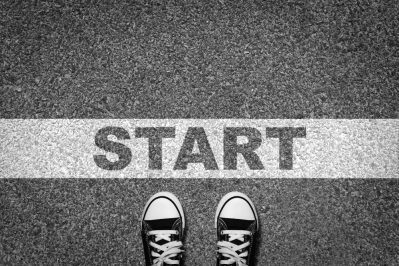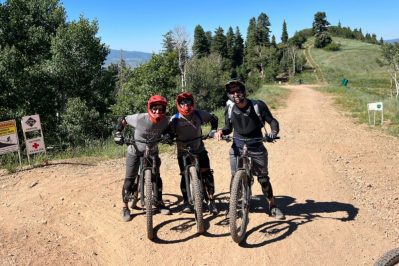Recently, I was skiing down the middle of a trail when a skier slightly in front of me abruptly made a 90 degree turn, crossing in front of me to catch up with her partner on the other side. This abrupt shift in direction, which was made without looking uphill first, forced me to take a last second maneuver to avoid a collision.
I ended up on the ground, quite frustrated. And while I rarely vocalize my anger at strangers, I yelled, “You can’t just turn like that across a trail without looking!” At this point, the skier’s partner jumped in, screaming that, as the downhill skier, his partner had the right of way. If I didn’t like it, he added, I should get off the mountain. A lively conversation ensued.
I admit that technically, he was right; the downhill skier does have the right of way. However, all week I had been emphasizing to my kids the importance of looking uphill when two trails merge, or when making sudden stops or turns on a busy trail. This ties to the greater theme I always stress to them: we should all be aware of our surroundings and how our actions impact others.
The reality is that, regardless of right of way, making a sudden 90 degree turn across the middle of any intermediate or advanced trail in the world is a recipe for disaster. This is true for the person making the turn, as well as any skiers/snowboarders coming down behind them. Having the right of way won’t keep you safe in a collision.
This experience brought me back to a lesson that my mom taught me at age 16 when I was first learning to drive. We were at a four-way stop sign intersection; after stopping for a few seconds, I started to go as another car approached the intersection at a decent rate of speed.
As soon as I took my foot off the brake, my mom admonished me. She said I should have waited to move until the other car came to a stop. I protested that I had the right of way, showing off my textbook learning from driver’s ed. Yes, she said, but there is also such a thing as being “dead right.” That lesson stuck with me.
It’s not surprising that most people want to be right. But I have often found people tend to prioritize being right even when doing so might be detrimental to them, as in the examples above. At the extreme, some people act in ways that might be harmful specifically to prove that have the right to do so.
One of the most crucial qualities in leadership is self-awareness, a component of emotional capacity that can be honed in several ways. First, leaders should understand how the world perceives them. Just as important, however, is to be aware of how our own actions and behavior affect the world around us. No one lives their life in a bubble, even though we all know people who act like they do.
This concept applies to more than just driving and skiing. In all areas of life, we need to recognize that, sometimes, even if you have the technical right to do something, it may not be the right choice for you, or for others. In leadership, understanding the impact of our actions on others is one of the biggest keys to success.
So, the next time you’re in a situation where you technically have the right of way—literally or figuratively—remember that being “dead right” is still dead, and the consequences are not always physical.
And most importantly, always look uphill!
Quote of The Week
“Leadership is about getting it right, not being right.”
–Tony Gambill









